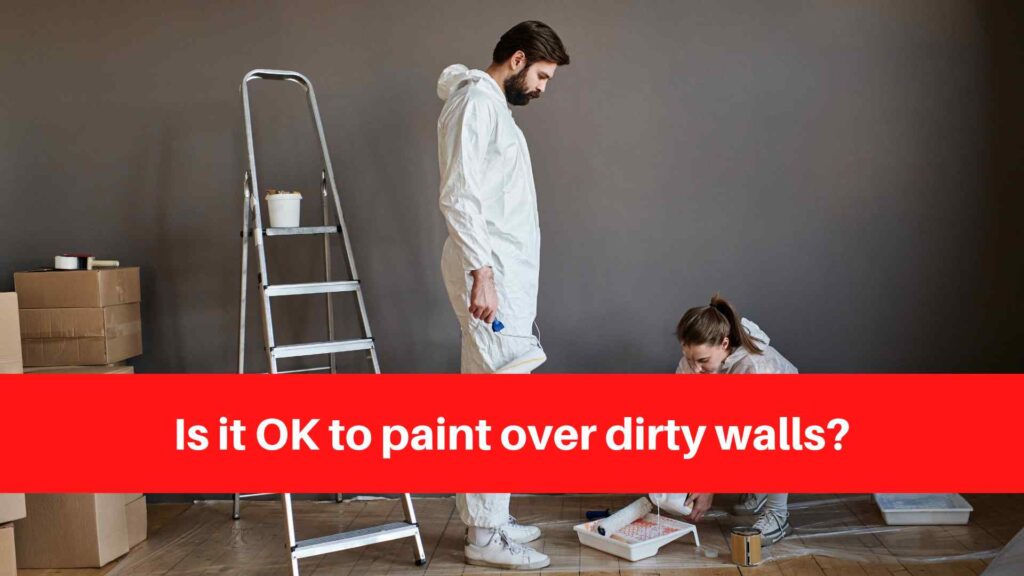Can You Paint Without Cleaning Your Walls?
You may be wondering if you can paint your walls without first cleaning them. After all, isn’t it just paint? Wrong. What you may not realize is that painting over dirty walls can actually be detrimental. What happens when you don’t clean your walls before painting is as follows:
Paint will not adhere properly – When you paint over dirt and grime, the paint will not adhere properly to the wall. This means that the paint will most likely peel and flake off shortly after application.
You’ll have to use more paint – If the paint doesn’t stick to the wall, you’ll have to use more paint to get even coverage. This not only wastes paint but also raises the overall cost of your project.
It will take longer to complete – Because you will be using more paint, painting over dirty walls will take longer than simply cleaning them.
As you can see, there are numerous reasons to always clean your walls before painting them. It will not only save you time and money in the long run, but it will also ensure that your paint job looks its best.
What Happens If You Don’t Clean the Walls First?
If your walls are not cleaned before painting, the paint will not adhere properly and will eventually peel off. Furthermore, any dirt or grime on the walls will be visible through the paint, giving your home a dirty and unkempt appearance.
Cleaning Tips for Wall Preparation
Cleaning your walls before painting is always a good idea. It aids in the removal of any dirt, dust, or grease from the surface and ensures that your paint adheres properly. Here are some cleaning tips for your walls before painting:
-Begin by lightly dusting the walls with a soft cloth or brush. This will get rid of any loose dirt or dust on the surface.
-Next, wash the walls with a mild soap and water solution. Make sure to thoroughly rinse the soap away afterward.
-To remove stubborn stains, use a mild abrasive such as baking soda or white vinegar. Simply apply it to the stain and gently scrub with a soft cloth until it lifts.
-Once your walls are clean and dry, you can begin painting!
How to Paint Over Dirty Walls Correctly
If you paint over dirty walls without first cleaning them, the dirt will show through the paint. To avoid this, clean your walls thoroughly before painting.
A TSP solution is the best way to clean dirty walls. TSP is an abbreviation for trisodium phosphate, which is a powerful cleaning agent capable of removing dirt, grease, and grime. TSP is available at most home improvement stores.
To use TSP, mix it with water according to the package directions. Then, apply the solution to your dirty walls with a sponge or brush and scrub them clean. When you’re finished, rinse the area with clean water.
Allow your walls to dry completely after you’ve cleaned them. If they are even slightly damp, the paint will not adhere properly, resulting in a poor finish.
Different Paint Types and When to Use Them
The paint you use for your project will be determined by the surface to be painted, the desired finish, and your personal preferences. Here are some of the most common paint types and when they should be used:
-The most common type of paint for walls is latex paint, which is a water-based paint that is easy to clean. It comes in a range of finishes, from high-gloss to flat.
-Oil-based paint is more durable than latex paint and is ideal for trim work or high-traffic areas. It can be more difficult to clean than latex paint, so use mineral spirits or turpentine.
-Acrylic paint is similar to latex paint in appearance, but it dries faster and can be applied to a variety of surfaces, including glass and metal.
-Chalkboard paint can be applied to walls or other surfaces to create a chalkboard surface. To ensure that the chalkboard finish adheres properly, prime the surface before painting.
Finally, cleaning your walls prior to painting is critical to ensuring that the paint adheres properly and lasts longer. Skipping this step can result in a variety of problems, including peeling or bubbling paint and an uneven finish. You can achieve excellent results with whatever color you choose with just a little effort and time spent prepping your walls for painting!



